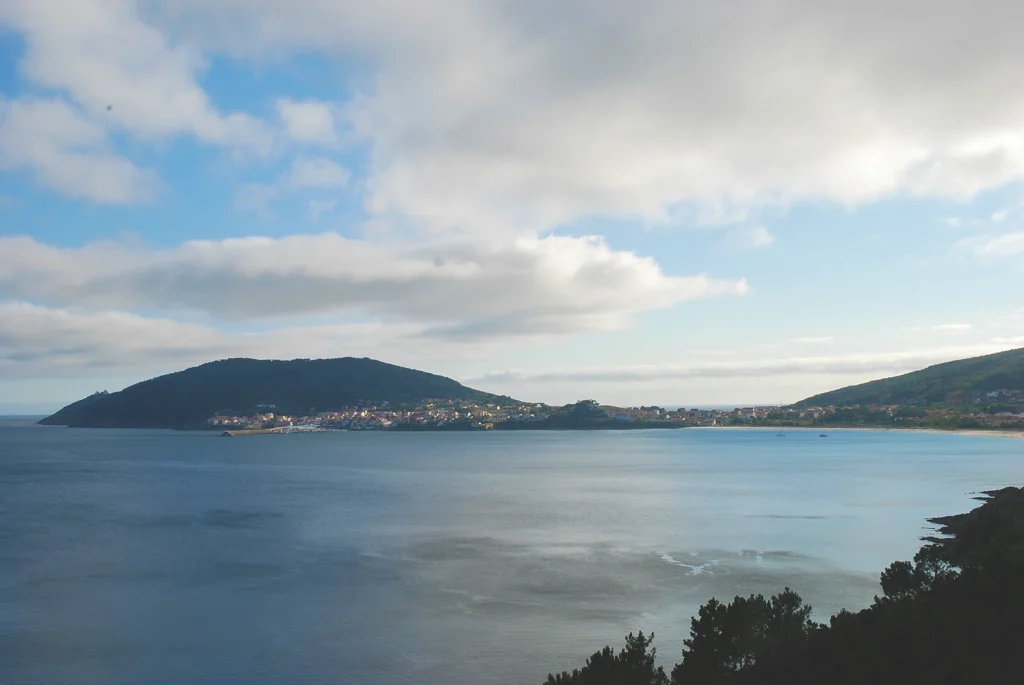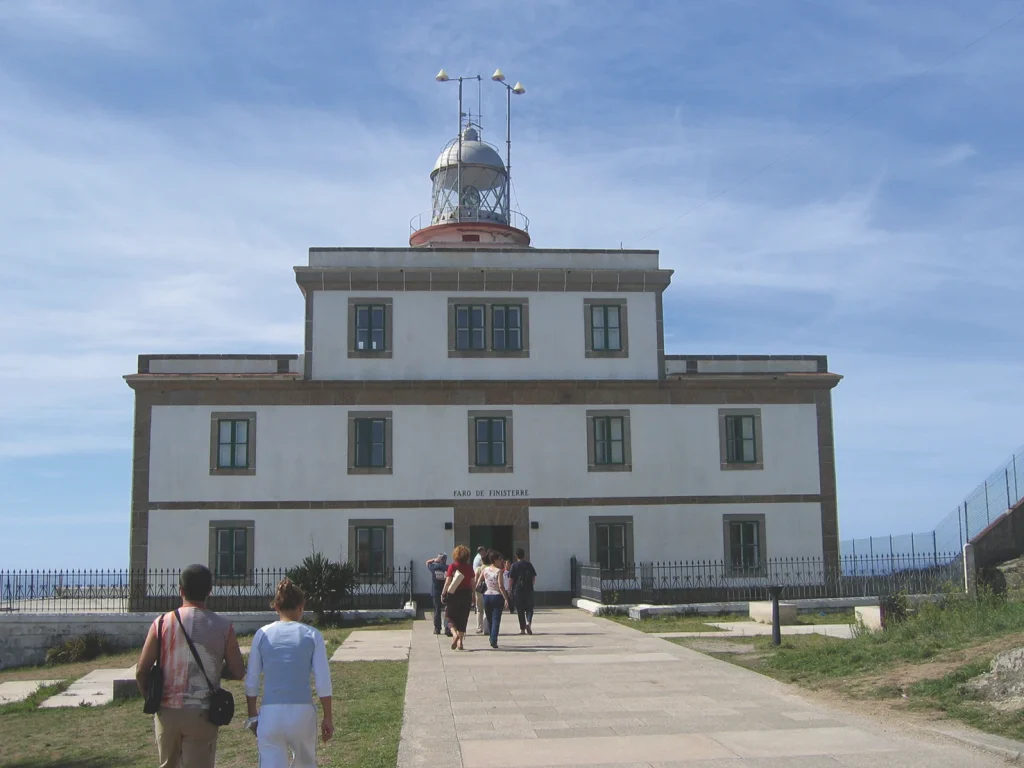After seeing the church, now’s the time to set off to the cape and lighthouse of Fisterra. We’d recommend walking the three kilometres to the cape. The route has some fantastic views of the ría of Corcubión, Monte Pindo, which rises over the bay like a granite giant, the long beach of Carnota, and farther south the elongated peninsula of Barbanza that ends at the headland of Corrubedo.

The peninsula that forms cape Fisterra, which penetrates for more than three kilometres into the sea, has two very different faces. The northern side is open to the Mar de Fóra, a local name for the ocean where waves violently crash against the sheer cliffs and the beach that bears the same name, while the south has a kinder side, with calm seas that wash against the beach of A Langosteira.
This point at the western extreme of the Iberian Peninsula and Europe, where the ancient world came to an end and an endless ocean began, awakened the curiosity of many who came to see the wild and stormy seas in a land full of legends of monstrous beasts and an ocean whose currents made any sea voyage a dangerous one.
Classical authors mentioned the region when writing about the western Peninsula and said that it was inhabited by a tribe called the Nerii. Cape Fisterra may be the promontory of the Nerii or the Celts that is mentioned in ancient sources. Some scholars believe that the Aras Sestianas, three altars dedicated to the emperor Augustus, were built here.
In the Middle Ages, Fisterra was linked to the Way of St James. The legend of the transfer of the remains of St James to Galicia, which is mentioned in the Codex Calixtinus, also refers to the legendary city of Duio, which was located behind the beach of Langosteira. Christian tradition also draws connections between St James and Fisterra, stating that he preached in these distant and pagan lands. The saint, made desperate by local resistance to his sermons, had the pagan city disappear under the waters, and then, exhausted, he withdrew to pray on the rocks of Muxía. The shrine of San Guillerme, situated on the eastern side of Monte Facho, is also linked to the cult of the Way of St James, since pilgrims would arrive here in ancient times to redeem the sins they had committed.

Several buildings were built at the end of the cape in the 19th c., one of which is a 143-metre-high lighthouse. The structure consists of a rectangular two-storey building with a third floor in the central part, painted white with the frames and corners built with masonry. The building contains the lighthouse keepers’ quarters and service facilities. The octagonal tower rises from the back of the building, crowned by the lantern room. The building was designed by the engineer Félix de Uhagón in 1853. It is a first category lighthouse. It emits a beam every 5 seconds that is visible at a distance of up to 31 miles (about 57 km).
When the lighthouse keepers stopped living in the building, some parts of it were converted for cultural and tourist activities. Exhibitions and cultural events were held inside, along with a tourist information office. However, the building has been closed for some years, despite it being in one of the most popular tourist destinations in Galicia.
A little further to the south is the rectangular foghorn building, which started operating in 1889. Two foghorns sticking out of the building emit a loud blare when there is a thick mist. Local people call it the Fisterra Cow, because the sound is similar to a moo.
Further north on a higher promontory stands the Semáforo, which was the old marine signalling station. It was designed by the engineer Joaquín López Vázquez and commenced operations in 1883. It was rehabilitated by the architect César Portela as a restaurant.